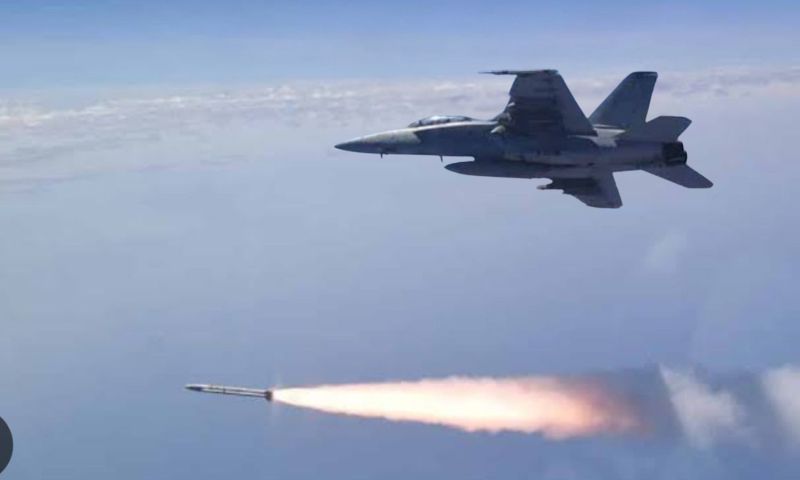ISLAMABAD: The United States is moving to advance production of its next-generation air-to-air missile, the Lockheed Martin AIM-260, with nearly $1 billion requested for the upcoming fiscal year — a move analysts view as a direct response to the enhanced capabilities of Chinese and Pakistani forces.
According to budget documents and service statements cited by Bloomberg, the US Air Force and Navy have sought funding for the classified system for the 2026 fiscal year beginning on 1 October.
The Air Force, which is leading the missile’s development, has requested $368 million for its initial production run, along with $300 million in additional funding listed in its annual “Unfunded Priorities List” to congressional defence committees. The Navy has separately asked for $301 million.
The missile, formally known as the Joint Advanced Tactical Missile, is expected to become the most advanced US air-to-air weapon, replacing the long-serving AIM-120 AMRAAM introduced in 1993.
The Air Force has declined to specify when the weapon will be fielded but confirmed it “will have increased range over existing air-to-air weapons and will be effective in a variety of threat scenarios.”
Defence analysts at Melius Research estimate the AIM-260 programme could grow into a $30 billion project, depending on the scale of production.
They note that the initiative comes at a critical time for Lockheed Martin, whose missiles and fire control division is under pressure following $1.6 billion in charges and a potential $4.6 billion tax accounting liability flagged in its second-quarter earnings report.
“Profitable growth at MFC is extremely important for Lockheed Martin,” Melius analyst Scott Mikus said, adding that much will depend on whether the company can “limit or avoid future charges on the classified missile programme, which is believed to be the AIM-260.”
Air-launched weapons capable of striking targets at extreme ranges have gained heightened importance since May, when Pakistani fighter jets used Chinese-made PL-15 missiles to down Indian aircraft more than 100 miles away without risking return fire.
In its 2023 annual report on Chinese military power, the US Department of Defense noted that Beijing’s air force had likely declared the PL-17 — a successor to the PL-15 — operational, with the ability to hit targets from as far as 400 kilometres (248 miles).
The AIM-260 is designed to fit within the internal weapons bays of advanced stealth fighters such as the F-22 Raptor and F-35 Lightning II, but the Air Force confirmed it will also be integrated into legacy aircraft including the F-15 and F-16.
























